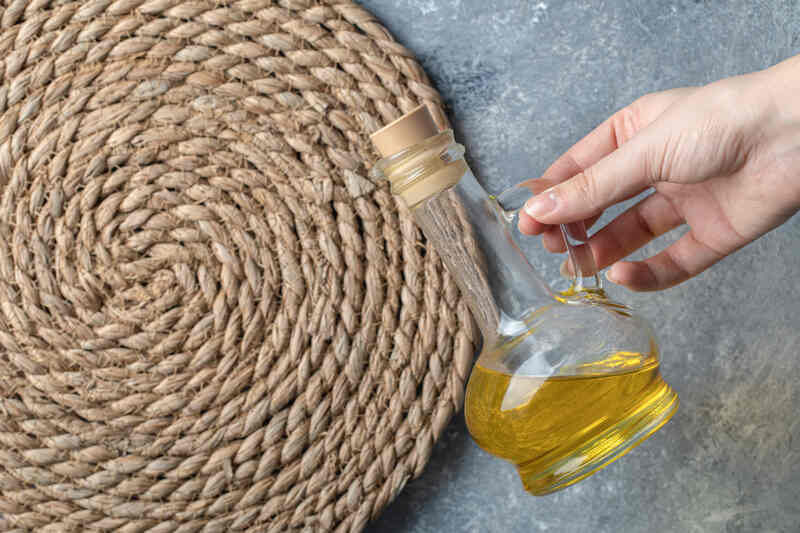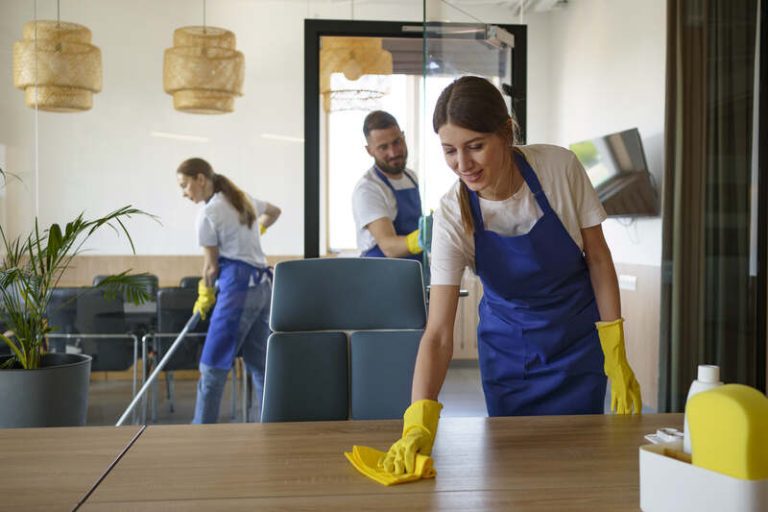Olive oil is a versatile ingredient in the kitchen, but if it spills on the carpet, it can be a real challenge to clean up. However, don’t worry, this guide on how to get olive oil out of carpet is made just for you!
Today, we’re going to give you some general and step-by-step methods of how to get olive oil out of carpet that you can easily follow.
From blotting with paper towels to using dishwashing detergent and baking soda, we’ll cover all the tips and tricks you need to know to effectively remove olive oil from your carpet.
We will also share the precautions that need to be taken and how to prevent olive oil stains in the future. Let’s check it out!
How To Get Olive Oil Out Of Carpet?
Removing olive oil from the carpet involves several common methods, each utilising different cleaning solutions and techniques to effectively lift the oil without damaging the carpet fibres. Here is a further explanation of how to get olive oil out of carpet:
a. Blotting with Paper Towels
The first step to remove olive oil from the carpet is to dab the area with a kitchen roll or a white cloth to absorb as much of the oil as possible before it sets into the fibres. Dabbing is crucial because it helps prevent the olive oil from spreading further and deeply penetrating into the carpet material, which could make it harder to clean.
By gently pressing the kitchen roll or cloth onto the affected area and allowing it to soak up the oil, you are effectively minimising the damage caused by the spill. Remember to avoid rubbing the oil, as this can push it deeper into the carpet fibres and make the stain more difficult to remove.
b. Using Dishwashing Detergent
Washing-up liquid, mixed with warm water, can be effective in breaking down the oil molecules in the stain, making it easier to remove from the carpet.
When preparing the solution, ensure to use a mild washing-up liquid to avoid any potential damage to the carpet fibres. It’s important to achieve the right balance of washing-up liquid and water – too much washing-up liquid may leave residues and lead to re-soiling, while too little may not effectively break down the stain.
Once the mixture is ready, gently blot the stain with a clean cloth soaked in the solution, starting from the outer edges and moving towards the centre to prevent spreading. Avoid rubbing vigorously as it can damage the carpet fibres.
c. Applying Baking Soda and Vinegar
Applying bicarbonate of soda and vinegar to the stained area can help to lift the oil and neutralise any residual odours, making it an effective home remedy for olive oil stains.
To effectively use this method, start by sprinkling a generous amount of bicarbonate of soda directly onto the oil stain. Let it sit and work its magic for about 15-20 minutes.
Afterwards, mix equal parts of vinegar and water in a spray bottle and generously spray it over the bicarbonate of soda. The chemical reaction between the two ingredients will create a foamy mixture that helps to break down the oil. Allow the solution to sit for another 10-15 minutes to fully penetrate the stain.
d. Using Commercial Carpet Cleaners
Commercial carpet cleaners and dry-cleaning solvents, such as those recommended by COIT, offer a professional-grade solution for tough olive oil stains.
In terms of types of commercial carpet cleaners, there are various options available in the market. These include hot water extraction machines, foam cleaners, and bonnet cleaning systems. Each type caters to specific needs and preferences, ensuring a thorough and effective cleaning process.
The application methods vary depending on the type of cleaner used. Some cleaners require dilution with water, while others can be directly applied to the stain. To choose the right product for olive oil removal, consider factors like the carpet material, the severity of the stain, and any specific manufacturer instructions. It’s also advisable to test a small, inconspicuous area of the carpet before applying the cleaner to the entire stain, ensuring compatibility and effectiveness.
Tips and Tricks to Remove Olive Oil from Carpet
In addition to applying the step-by-step how to get olive oil out of carpet described above, here are some tips and tricks that can help:
a. Act Quickly
Acting quickly is crucial when dealing with an olive oil spill on your carpet to prevent the stain from setting into the fibres.
First, grab a clean cloth or kitchen roll and gently blot the area to soak up as much of the oil as possible. Avoid rubbing the spill, as this can spread the oil and deepen the stain.
Next, sprinkle a generous amount of cornflour or bicarbonate of soda over the affected area to absorb any remaining oil. Let it sit for at least 15 minutes before hoovering it up.
For any lingering residue, mix washing-up liquid with warm water and gently scrub the spot. Finish by blotting the area with a damp cloth to remove the cleaning solution.
b. Use a Grease-fighting Dish Soap
Using a grease-fighting washing-up liquid can break down the oil molecules more effectively than regular soap, aiding in the cleaning process.
A grease-fighting washing-up liquid is specially formulated to cut through tough grease and grime, making it a powerful tool for tackling oil stains.
One of the key benefits of using this type of soap is its ability to emulsify the oil, allowing it to be easily rinsed away with water.
To effectively use a grease-fighting washing-up liquid for oil stain removal, simply apply a small amount directly to the stain, gently agitate the fabric, and let it sit for a few minutes before washing as usual.
c. Test in an Inconspicuous Area First
Before applying any cleaning solution to the stained area, it’s important to test it in an inconspicuous spot to ensure it won’t damage or discolour the carpet.
For the spot test, mix a small amount of the cleaning solution with water according to the manufacturer’s instructions. Apply a few drops of the solution on a hidden corner or under furniture.
Observe for any adverse reactions after a few minutes. Signs that the solution is safe to use include no colour fading, no texture changes, and no residue left behind.
d. Avoid Rubbing the Stain
Avoid rubbing the stain, as this can cause the olive oil to penetrate further into the carpet fibres; instead, always blot the area gently.
Blotting is a much more effective way to lift the oil off the carpet surface without spreading it further. By gently pressing a clean cloth or towel onto the stain, you can absorb the oil without pushing it deeper into the fibres. Blotting also helps prevent the stain from setting into the carpet, making it easier to remove. Remember to work from the outside of the stain towards the centre to avoid spreading it. Repeat the blotting process using a fresh section of the cloth until no more oil is being absorbed.
e. Blot, Don’t Scrub
Blotting with a white cloth is more effective than scrubbing and helps to lift the oil from the carpet without spreading it further.
When dealing with oil spills on your carpet, the key is to act swiftly and efficiently. First, grab a clean white cloth and gently blot the affected area. Avoid applying too much pressure, as this can cause the oil to seep further into the fibres. Instead, use a pressing motion to absorb as much oil as possible.
It’s crucial to start from the outer edges of the spill and work your way towards the centre. This method prevents the oil from spreading and makes it easier to contain. Remember to change the cloth frequently to prevent reapplying the oil onto the carpet.
Continue blotting until you see no more oil transferring onto the cloth. For stubborn stains, you can use a mixture of mild detergent and water to lightly dab on the area. Always test the solution on a small, inconspicuous spot first to ensure it doesn’t damage the carpet fibres.
f. Rinse with Warm Water
After treating the stain, rinse the area with warm water to remove any remaining cleaning solution and oil residue.
Rinsing the area with warm water is crucial as it helps in thoroughly cleaning the treated spot. The warm water aids in breaking down the cleaning solution and oil residue, making it easier to wash away. Warm water helps open up the fibres of the fabric, allowing for better penetration and removal of any lingering particles.
Start by gently blotting the area with a clean cloth to absorb any excess cleaning solution. Then, run warm water over the stain, making sure to cover the entire treated section. Continue to rinse until the water runs clear, indicating that the stain and cleaning residue have been effectively eliminated.
g. Use a Fan or Hairdryer to Dry the Area
Using a fan or hairdryer to dry the treated area can help prevent mould and mildew from developing in the carpet fibres.
Proper ventilation is crucial in expediting the drying process. Opening windows and doors to allow fresh air circulation can aid in removing moisture trapped in the carpet. For larger areas, utilising a dehumidifier can be highly effective in extracting excess moisture from the air, accelerating the overall drying time.
Ensuring the area is completely dry is paramount to prevent the growth of mould and bacteria, which can lead to undesirable odours and potential health hazards. Thoroughly dried carpets also help maintain their integrity and extend their lifespan, saving you money in the long run.
How to Prevent Olive Oil Stains on Carpet?
Preventing olive oil stains on the carpet involves taking proactive steps such as using rugs in high-risk areas and being cautious when handling olive oil and other cooking oils.
Another effective measure to avoid olive oil spills on carpets is to ensure that the lids on olive oil bottles are securely fastened when not in use. This simple practice can prevent accidental leaks and spills that could lead to unsightly stains on your carpet. Using spill-proof containers or pouring spouts when transferring olive oil can help minimise the risk of spills during cooking or serving.
The above is a step-by-step guide on how to get olive oil out of carpet, complete with tips and tricks, and preventive measures that you can take at home.
However, for the most effective and thorough results, it’s best to rely on professional carpet cleaning services. At TEKA Cleaning, our experienced team uses advanced equipment and techniques to ensure your carpets are spotless and fresh.
Don’t let stubborn stains ruin your carpets. Contact TEKA Cleaning today to book our carpet cleaning services. Call us at 01233 751 544 or visit our website to schedule an appointment. Trust the experts to keep your carpets in pristine condition.
Read also:










